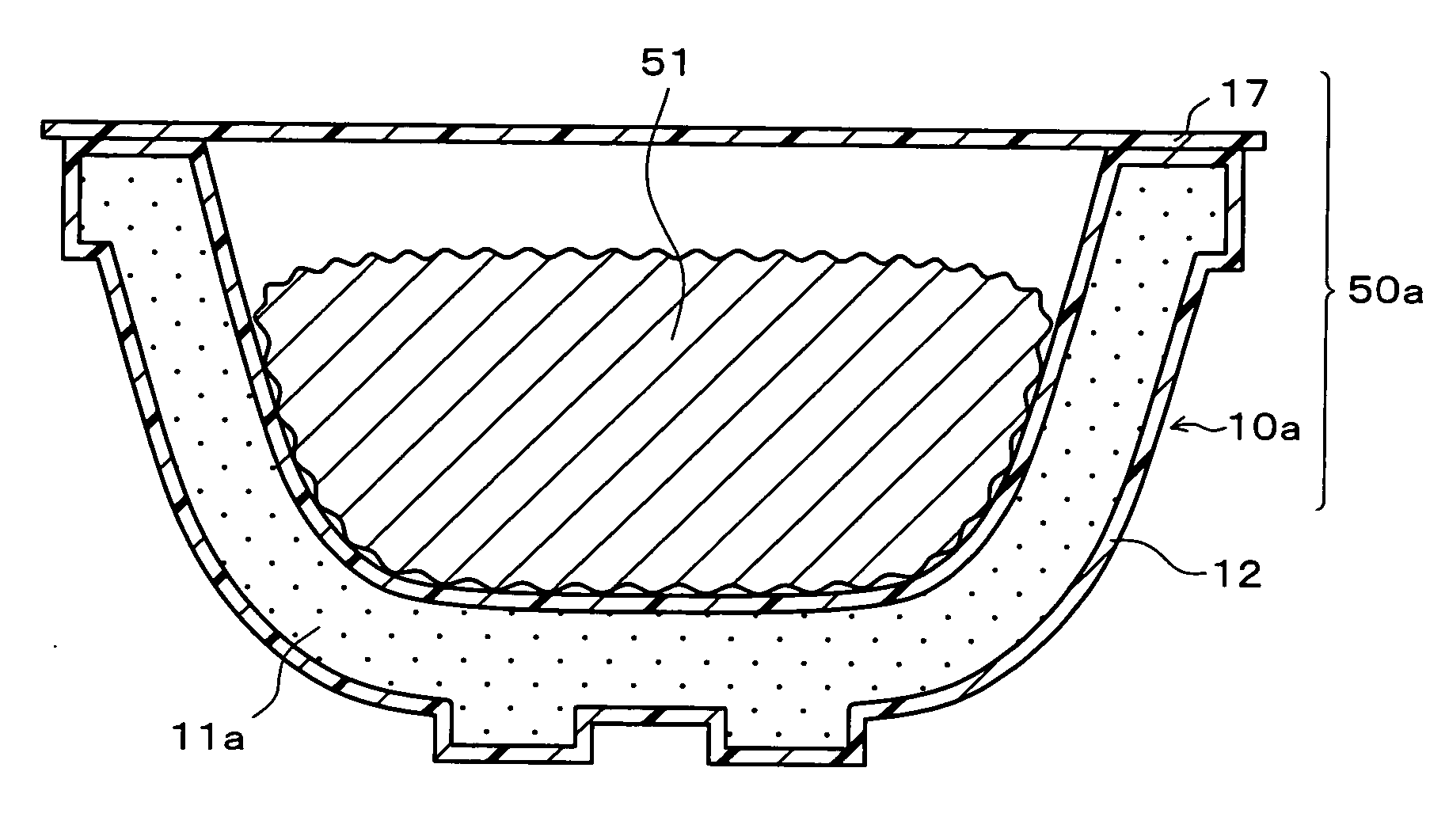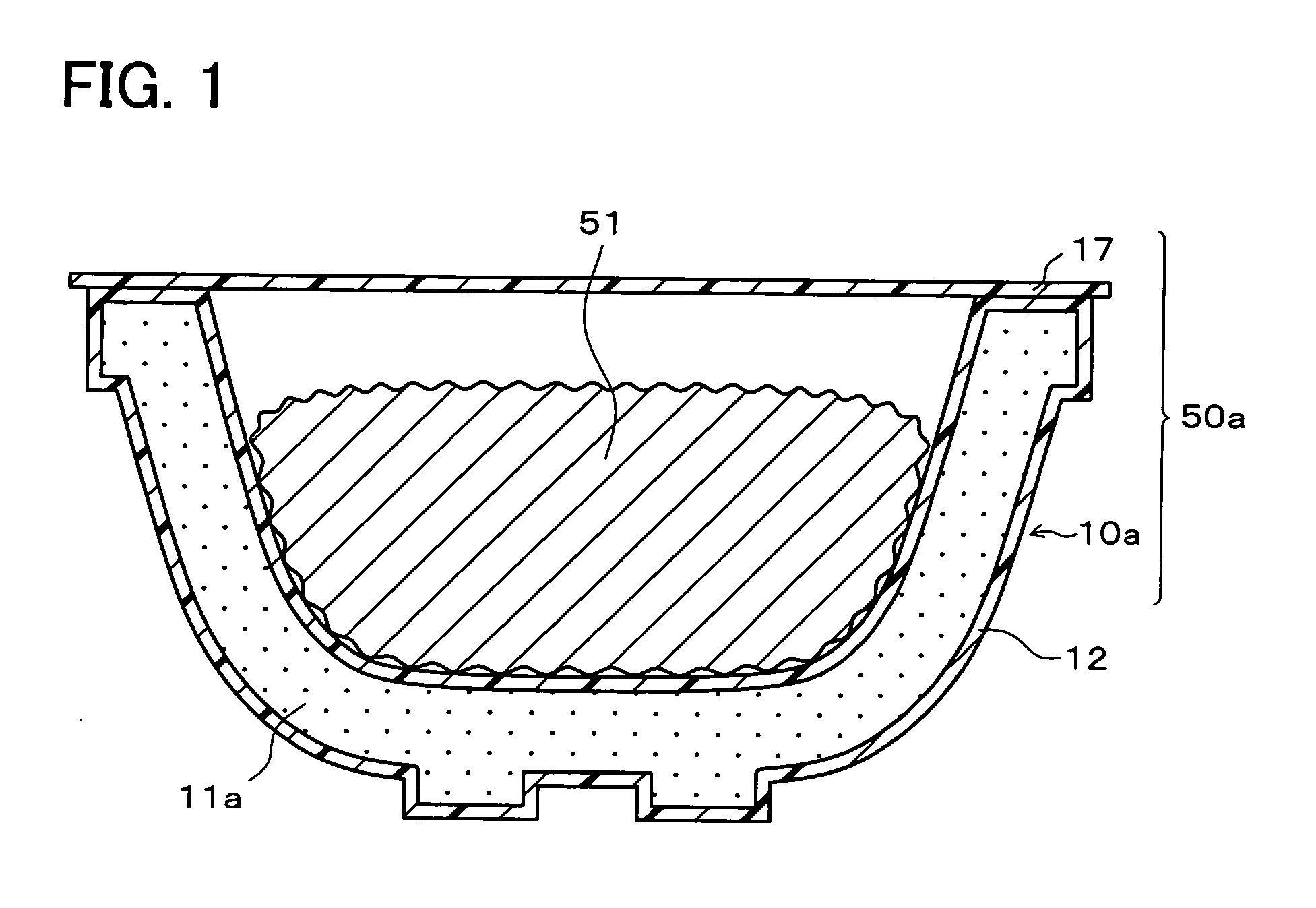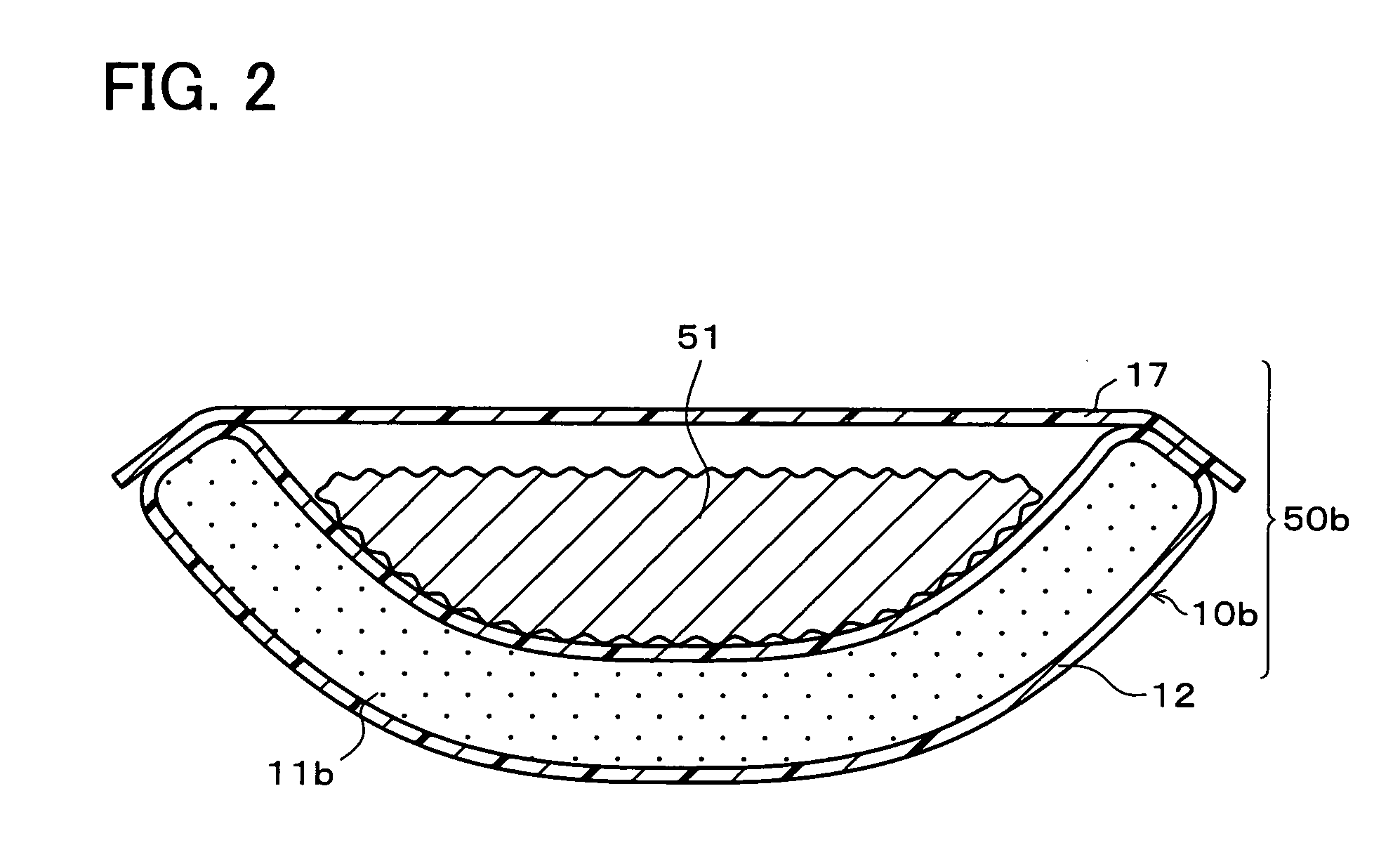Hermetically sealed container
a container and hermetically sealed technology, applied in the field of hermetically sealed containers, can solve the problems of inability to bury the molded article, damage to the incinerator by the plastic molded article, and the paper/pulp molded article has difficulty in being used as disposable molded articles, etc., to achieve excellent biodegradation, water resistance, and strength. good
- Summary
- Abstract
- Description
- Claims
- Application Information
AI Technical Summary
Benefits of technology
Problems solved by technology
Method used
Image
Examples
example 1
[0364] First of all, 30.0 grams of high-amylose starch (corn starch containing 60% of amylose), 7.0 grams of coniferous virgin pulp as water-insoluble fiber (strength adjusting agent), 7.0 grams of calcium carbonate as strength adjusting agent, and 0.2 grams of guar gum as stabilizer and strength adjusting agent, and 55.8 grams of water were mixed to prepare 100.0 grams of dough molding material (hereinafter referred to as a molding material (1)).
[0365] Next, instead of high-amylose starch, 100 grams of dough molding material was prepared in the same way as the molding material (1) except that a mixture containing 25 weight % of potato starch and 75 weight % of high-amylose starch (corn starch containing 60% of amylose) is used (hereinafter referred as to the molding material (2)).
[0366] In addition, 30.0 grams of potato starch as the main ingredient, 15.0 grams of polyvinyl alcohol, 4.0 grams of coniferous virgin pulp as water-insoluble fiber (strength adjusting agent), 10.0 gram...
example 2
[0371] The bowl-shaped hermetically sealed container 50a was manufactured in the same way as example 1 except that a biaxially stretched modified polyester film of 50·m thick was used as the coating film 12.
example 3
[0372] 35.0 grams of potato starch as the main ingredient, 7.0 grams of polyvinyl alcohol, 7.0 grams of coniferous virgin pulp as water-insoluble fiber (strength adjusting agent), 0.3 grams of titanium dioxide as filling agent and coloring and 50.7 grams of water were mixed to prepare 100 grams of dough molding material (hereinafter referred to as the molding material (4)).
[0373] The bowl-shaped hermetically sealed container was manufactured in the same way as example 2 except that the molding material (4) was used as the molding material 14.
PUM
| Property | Measurement | Unit |
|---|---|---|
| Percent by mass | aaaaa | aaaaa |
| Percent by mass | aaaaa | aaaaa |
| Percent by mass | aaaaa | aaaaa |
Abstract
Description
Claims
Application Information
 Login to View More
Login to View More - R&D
- Intellectual Property
- Life Sciences
- Materials
- Tech Scout
- Unparalleled Data Quality
- Higher Quality Content
- 60% Fewer Hallucinations
Browse by: Latest US Patents, China's latest patents, Technical Efficacy Thesaurus, Application Domain, Technology Topic, Popular Technical Reports.
© 2025 PatSnap. All rights reserved.Legal|Privacy policy|Modern Slavery Act Transparency Statement|Sitemap|About US| Contact US: help@patsnap.com



